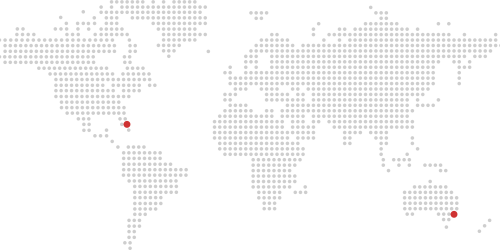Majority of organizations believe that moving to a cloud-based architecture removes risks and vulnerabilities that curse traditional network environments. Unfortunately, this is not the case as traditional security measures prove no longer to be effective at managing a cloud environment. Migrating to a cloud architecture exposes a new level of threats to the cloud environment. As a result all organizations leveraging the cloud must perform comprehensive penetration testing of all cloud infrastructures.
Cloud service providers (CSPs), including IaaS, PaaS, SaaS, and hybrid, and the organizations that use these services are faced with security challenges. Covert Threat is here to assist.
Covert Threat’s teams of experts are highly experienced and well versed in NIST 800-53 and Department of Defense requirements. We understand how these requirements relate to commercial cloud environments (AWS, Azure & GCP) and have incorporated this into all our engineering processes, ensuring our clients they can operate in the cloud with confidence.
• Satisfy PCI, HIPAA and NERC-CIP compliance
• Test your cyber-security controls after they mature
• To match up critical vulnerabilities with critical assets
• To identify all false-positives and false-negatives
• At least annually, recommended semi-annually
• After changes to your configurations or hardware
• Patch management remediation on discovered vulnerabilities
• AS OFTEN AS YOU LIKE

1. Define Scope
Detailed outline with the customer to define what assets are in scope.

5. Exploitation
Exploit vulnerabilities discovered in the vulnerability analysis stage with custom and generic exploitation scripts.

2. Information Gathering
Map out the corporate infrastructure based on services, ports, hardware, software and operating system.

6. Post Exploitation
Successful exploitation’s lead to privilege escalation and new vulnerabilities to test for exploitation.

3. Threat Modeling
Determine mission critical and connected assets to corporate data through white, gray or black box approach.

7. Reporting
Creation of Executive and Detail technical reports for both management and remediation team.

4. Vulnerability Analysis
Utilize enterprise and custom scanning tools to uncover vulnerabilities.

8. Exit Call
Call scheduled with customers management and remediation team to explain in detail the findings and assist in remediation processes.
1. Define Scope
Detailed outline with the customer to define what assets are in scope.
2. Information Gathering
Map out the corporate infrastructure based on services, ports, hardware, software and operating system.
3. Threat Modeling
Determine mission critical and connected assets to corporate data through white, gray or black box approach.
4. Vulnerability Analysis
Utilize enterprise and custom scanning tools to uncover vulnerabilities.
5. Exploitation
Exploit vulnerabilities discovered in the vulnerability analysis stage with custom and generic exploitation scripts.
6. Post Exploitation
Successful exploitation’s lead to privilege escalation and new vulnerabilities to test for exploitation.
7. Reporting
Creation of Executive and Detail technical reports for both management and remediation team.
8. Exit Call
Call scheduled with customers management and remediation team to explain in detail the findings and assist in remediation processes.
Covert Threat’s industry leading security professionals are readily available to assist and recommend additional security methods to better protect your organizations cloud environment. Our experts will work with your organization team leads to stimulate either a real-life penetration testing scenario with zero knowledge known as blackbox, partial knowledge, known as graybox or with full information on the corporate cloud infrastructure disclosed to perform a whitebox assessment.
Network devices, Cloud infrastructure, Web applications, Wireless, Mobile applications and Internet of things devices
Network devices, Cloud, Wireless, Web application, Internet of things devices, Mobile applications, Social engineering, Continuous penetration testing and Active directory enumeration

CovertThreat is ready to assist with all your organizational security needs!

Our team of industry experts are ready to assess your organizational end-points to discover all possible security flaws.

Once we assess your organization for security flaws, our team provides the a detailed solution to eliminate the potential threat vectors. We work with you!

Florida – USA | Sydney – Australia